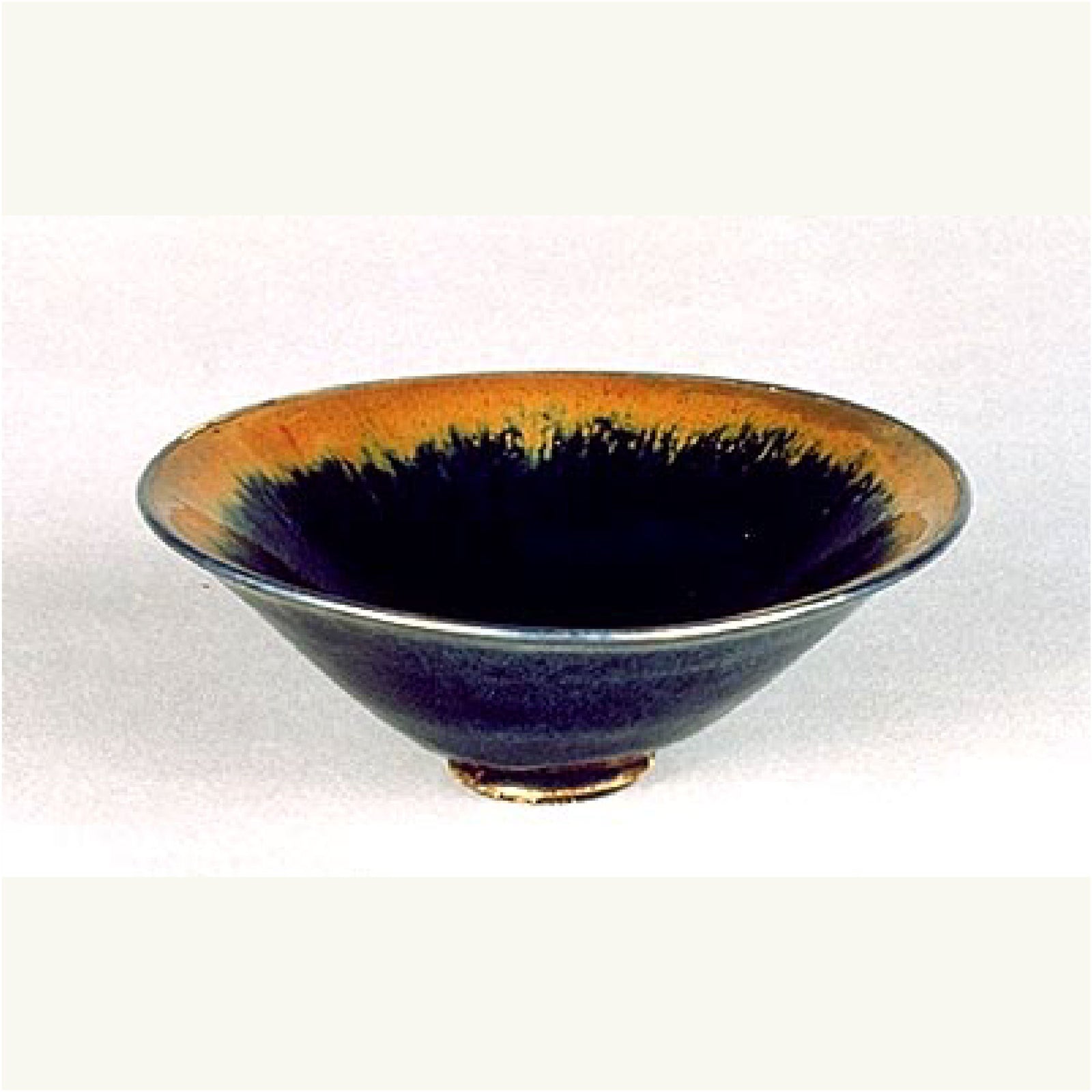
Fine Chinese items, especially Song dynasty (1127–1279) wares (and tea), were bought back to Japan by monks returning from studying Zen Buddhism in China. This led to “an accumulation at Zen temples of many things of Buddhism, including paintings, scrolls of calligraphy, and tenmoku tea bowls” (from The Development of Chanoyu by Murai Yasuhiko). These Chinese items began to be referred to by the generic term karamono (fine Chinese objects). This is the root of the Wikipedia definition:
“Tenmoku (天目, also spelled "temmoku" and "temoku") is a type of Japanese pottery and porcelain that originates in imitating Chinese stoneware Jian ware (建盏) of the southern Song dynasty (1127–1279), original examples of which are also called tenmoku in Japan.”
By the mid-fifteenth century, a person who has taste (suki) is one who “keeps his tea utensils in beautiful condition, and who loves and possesses, according to his own tastes, such utensils as tenmoku tea bowls, kettles and water buckets” (Shotetsu Monogatari as translated by Murai).
Even after the move from the Shoin Karamono style of tea ceremony to the Wabicha Soan style, there was still a place for tenmoku tea bowls, alongside other East Asian and native Japanese works.
Tenmoku can refer to both a glaze (as in the Wikipedia definition above) and a shape, and can be traced back to this Japanese fondness for Karamono, or Chinese objects. The Japanese hand-made craft association (Nihon Kogeikai) defines Tenmoku as both a shape:
"Tenmoku = A type of tea bowl with a low foot, flaring sides and an S-shaped rim historically used in China for drinking tea. The name is derived from a mountain in Zhejiang Province in China. The term Tenmoku glaze is used generically for dark iron-bearing glazes similar to those used on Tenmoku tea bowls."
and a glaze:
"Tenmokuyu = A general term used for iron glazes that fire a dark brown colour. These include kokuyu (black glaze), kakiyu (persimmon glaze) and bekkoyu (tortoiseshell glaze). The name Tenmoku is derived from so-called Tenmoku tea bowls from China."
The Kyoto National Museum has a nice page showing some of the most desirable Tenmoku glazes. These glazes are exceptionally hard to do, hence the rather less demanding definition of Tenmoku from the Nihon Kogeikai further above. 
Teabowl with Brown and Black Glaze (Honan Tenmoku)
Height: 5.2 cm, Diameter: 13.8 cm, Base diameter: 3.3 cm
China, Southern Song Dynasty (12th-13th Centuries)
(Kyoto National Museum)
This style was picked up by Bernard Leach after his return to England and the construction of the Leach Pottery. This mid-fifties interpretation proved to be one of his enduringly popular examples. The examples below date from the sixties. 
Tenmoku can be very dark and quite flat which sometimes doesn’t suit Western taste. Maeda san has a nice combination of a deep glossy black and rich persimmon glaze but it is livened up with gold starry speckles in the black which adds a lively but restrained feel to the glaze.



